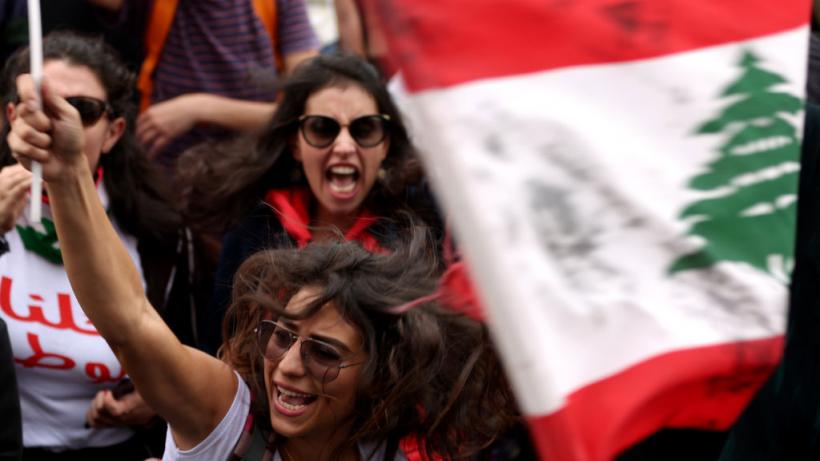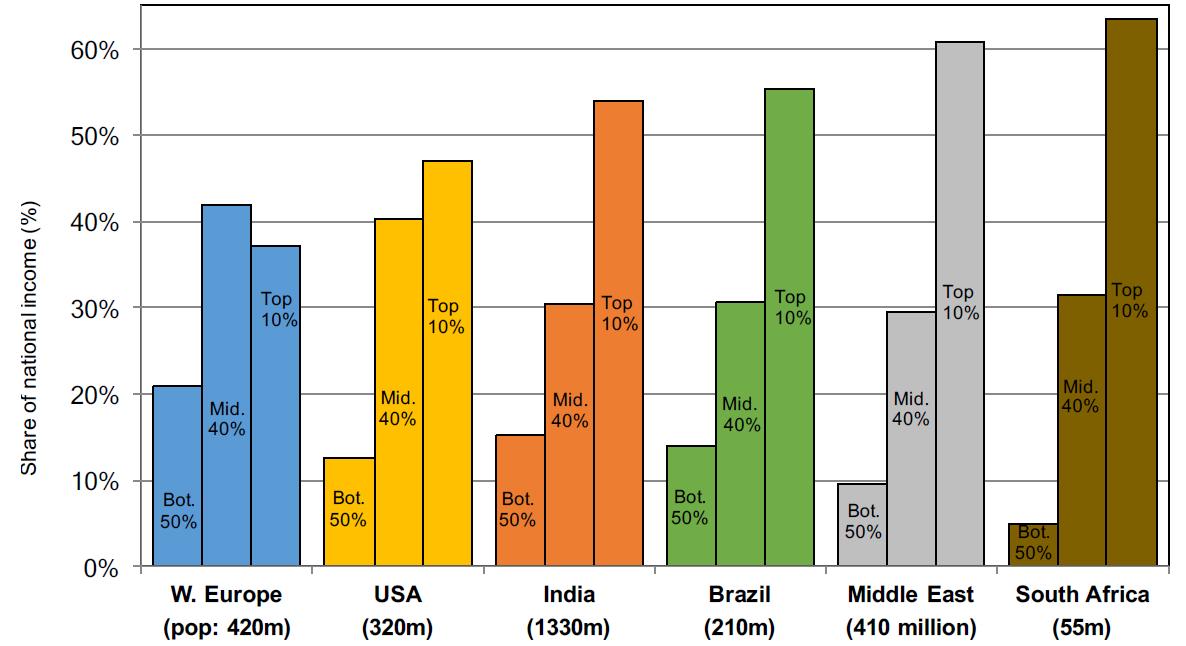
The economic figures behind the protests in the Middle East
Though they might seem unconnected, the underlying root causes of protests in many countries in the Middle East are similar. Protesters in all countries complain about deteriorated economic conditions, income inequality, and widespread endemic corruption.
Jordan, Algeria, Iraq, and most recently Lebanon have all witnessed protests over the past year. The majority of protesters are young men and women who are either unemployed or at least uncertain about labour market opportunities. According to the World Bank and national statistical agencies, unemployment rates have reached 16.6% in Iraq, 25% in Lebanon, 19% in Jordan and 11.7% in Algeria. Youth unemployment rates have been historically the highest in this region (Figure 1). Moreover, university graduates make up nearly 30% of the unemployed in the Middle East and North Africa (MENA).
Figure 1: Youth Unemployment Rates by Region
 Source: World Bank, "World Development Indicators"
Source: World Bank, "World Development Indicators"
Gender and income inequality
The gender gap in the workforce is considered to be a major impediment for both equality and growth. In fact, reducing the gender gap in labour force participation to double (rather than triple) the average for emerging market and developing economies would double GDP growth in MENA over the past decade—a gain of $1 trillion in cumulative output (IMF, 2018)
On top of this, the Middle East exhibits high levels of income inequality. According to Assouad et al. (2018), the share of total income of the top 10% of income earners is about 64% of the total wealth in the Middle East, more than Brazil, one of the most unequal countries in the world. The middle-class also seem to hold a lower share of income compared to sampled regions and countries, as shown in Figure 2.
Figure 2: Share of National Income by Region
 Source: Assouad et al. (2018)
Source: Assouad et al. (2018)
Moreover, public financial management and the mobilisation of resources remains inadequate, exerting negative pressure on the provision of services and social security spending. In the MENA region, only 11% of GDP is spent on education, health and social safety nets, compared to 19% in Emerging Europe and 14% in Latin America (IMF, 2018).
Fiscal problems
The governments of oil importing countries are constrained by large fiscal deficits triggered by low tax collection, high wage-bill, leakages, and sectoral inefficiencies (e.g. energy and waste collection in Jordan and Lebanon).
Tax systems often do not generate enough revenue and are widely considered not to be very progressive. The rich often pay less in taxes as a share of income than an average citizen. Moreover, widespread evasion and exemption have contributed to a narrow tax base. In fact, raising tax collections to the average level of emerging markets would create resources of more than 9% of MENA GDP to fund priority social and infrastructure spending (IMF, 2018).
The wage bill of the public sector in the Middle East also remains high. During the past decade, MENA economies spent on average 6% of their GDP a year on general government payroll—equivalent to a fifth of their total expenditure (Duenwald and Tamirisa, 2018).
In addition to this, protesters, specifically in Iraq and Lebanon, argue that corruption and sectarian quotas systems are the main reasons for inadequate allocation of resources and public money. Iraq and Lebanon rank 168 and 138, respectively, out of 180 countries on the Corruption Perception Index.
Policy implications: Reshaping the social contract
Public trust in governments in the Middle East remains low. The economic and structural reforms are well-known and have long been disseminated by researchers and international organizations. Nonetheless, what remains important is to rebuild the trust between states and their citizens. The young men and women of the Middle East have an important role in reshaping the social contract to govern an inclusive economic and political landscape in their countries.
References
Assouad, L, L Chancel and M Morgan (2018), “Extreme inequality: Evidence from Brazil, India, the Middle East and South Africa,” American Economic Association Papers & Proceedings.
International Montery Fund (2018). “Opportunity for All: Promoting Growth and Inclusiveness in the Middle East and North Africa”; IMF Middle East and Central Asia Departmental Paper.
Tamirisa, N., and K. Duenwald. 2018. “Public Wage Bills in the Middle East and Central Asia Region.” IMF Departmental Paper, International Monetary Fund, Washington, DC.

